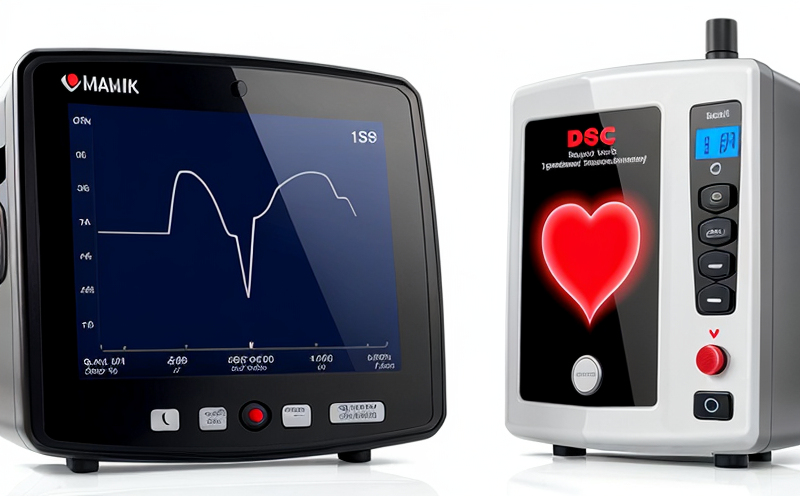ISO 25539-2 Stent Foreshortening Testing
The ISO 25539-2 standard provides a method for determining the mechanical performance of stents through foreshortening tests. This test is critical in ensuring that coronary stents maintain their structural integrity and function effectively within the body. Foreshortening refers to the unintended shortening of a stent during deployment, which can impact its ability to provide adequate support to the vessel walls.
The testing process involves deploying the stent under specific conditions and then measuring any reduction in length that occurs after expansion. This measurement is essential for assessing compliance with design specifications and regulatory requirements. Compliance ensures that the device performs reliably and safely within the intended medical applications, particularly in coronary artery intervention procedures.
The test parameters are meticulously defined to simulate real-world deployment scenarios as closely as possible. Specimens are prepared by fixing the stent on a catheter, which is then inserted into a pressure chamber. The chamber inflates the catheter with a saline solution or other appropriate fluid until the stent achieves its fully expanded state.
Upon achieving this condition, measurements of the stent's length and diameter are taken before and after inflation to detect any foreshortening. This process is repeated multiple times under varying conditions to ensure accurate and consistent results. The acceptance criteria for successful testing involve meeting specified limits on maximum allowable foreshortening percentages.
Understanding the importance of this test in medical device development, compliance with ISO 25539-2 standards ensures that healthcare providers can trust the performance and reliability of stents used in critical cardiovascular interventions. This standard is widely recognized for its role in maintaining high-quality medical devices, thereby enhancing patient safety.
For R&D engineers, this test provides insights into material selection and design optimization to minimize foreshortening during deployment. Compliance officers can rely on these tests to ensure their products meet regulatory requirements. Quality managers benefit from this testing methodology by ensuring consistent product quality across batches and production runs.
Why It Matters
The ISO 25539-2 test is essential for ensuring the safety and effectiveness of coronary stents. Foreshortening can lead to inadequate support, which could cause complications such as vessel dissection or restenosis. These issues are particularly concerning in patients undergoing angioplasty procedures where the stent plays a crucial role in maintaining patency.
By adhering to ISO standards, manufacturers can demonstrate compliance with regulatory bodies like the U.S. Food and Drug Administration (FDA) and the European Commission's Medical Device Directive (MDD). This compliance is critical for obtaining market approval and ensuring that healthcare providers have access to safe, effective devices.
The test also helps in identifying potential design flaws early in the development process. Engineers can use the results from these tests to refine designs, select appropriate materials, and optimize manufacturing processes. This approach not only enhances product quality but also reduces the risk of post-market recalls and litigation.
Moreover, consistent adherence to such standards fosters trust among healthcare professionals and patients. The reliability and safety of medical devices are paramount in maintaining public confidence in medical technology. By meeting these stringent testing requirements, manufacturers contribute significantly to the advancement of cardiovascular care.
Why Choose This Test
The ISO 25539-2 foreshortening test is a cornerstone in the evaluation of coronary stents. Its precision and reliability make it an indispensable tool for medical device manufacturers, especially those focused on ensuring optimal performance and safety.
- Regulatory Compliance: Compliance with ISO standards ensures that products meet international regulatory requirements and are approved by relevant authorities.
- Quality Assurance: The test provides a robust framework for quality control, helping to maintain consistent product quality across all batches and production runs.
- Patient Safety: By identifying potential issues early in the development process, this test helps reduce risks associated with inadequate stent support, thereby enhancing patient safety.
- Design Optimization: Engineers can use the results from these tests to refine designs, select appropriate materials, and optimize manufacturing processes, leading to improved product performance.
The ISO 25539-2 test is not only a regulatory requirement but also a best practice for ensuring high-quality medical devices. By incorporating this testing method into their quality assurance protocols, manufacturers can demonstrate their commitment to patient safety and regulatory compliance.
Environmental and Sustainability Contributions
- Eco-Friendly Materials: The use of biocompatible materials in stents reduces the environmental impact during manufacturing and disposal. Manufacturers are increasingly focusing on sustainable materials that degrade harmlessly within the body.
- Reduced Waste: By ensuring that stents perform optimally, fewer devices need to be replaced due to performance issues, reducing overall waste and associated costs.
- Innovation in Manufacturing: The stringent requirements of ISO 25539-2 encourage continuous improvement in manufacturing processes. This innovation contributes to more efficient use of resources and reduced energy consumption.
The focus on sustainability extends beyond the product itself, encompassing the entire lifecycle from raw material extraction to end-of-life disposal. By adhering to these standards, manufacturers can play a vital role in promoting environmental stewardship within the medical device industry.





